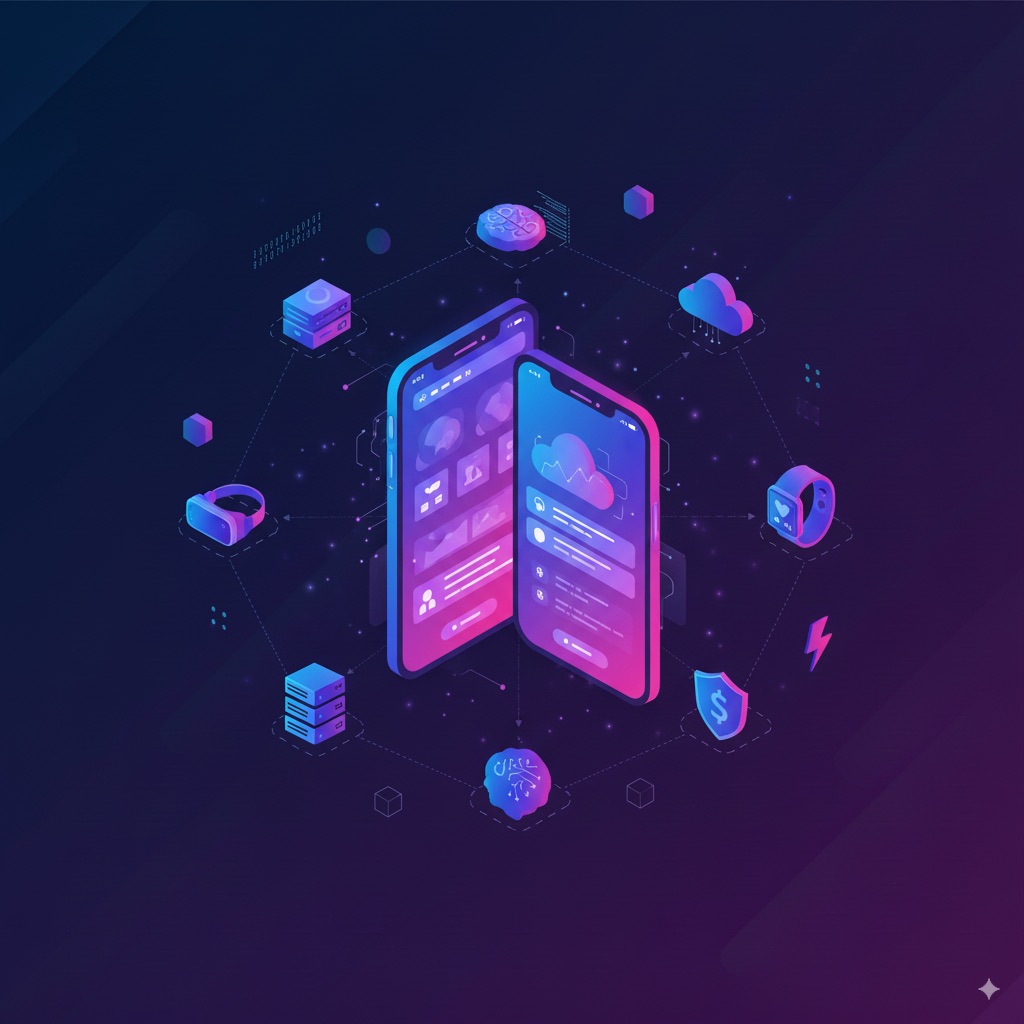Mobile App Development Trends to Watch in 2025
The mobile app development landscape continues to evolve rapidly, with new technologies and methodologies emerging to meet changing user expectations and business needs. Here are the key trends shaping mobile development in 2025.
1. AI and Machine Learning Integration
Artificial Intelligence is no longer a luxury feature - it's becoming essential for competitive mobile apps.
Key Applications:
- Personalized User Experiences: AI-driven content recommendations
- Intelligent Chatbots: Enhanced customer support automation
- Predictive Analytics: Anticipating user behavior and preferences
- Voice Recognition: Natural language processing for voice commands
Popular AI Frameworks:
- TensorFlow Lite for mobile
- Core ML (iOS)
- ML Kit (Android)
2. Cross-Platform Development Dominance
Cross-platform frameworks are gaining significant traction as businesses seek to reduce development costs and time-to-market.
Leading Frameworks:
Flutter
- Google's UI toolkit for building natively compiled applications
- Single codebase for iOS, Android, web, and desktop
- Growing ecosystem and strong performance
React Native
- Facebook's framework using React and JavaScript
- Mature ecosystem with extensive third-party libraries
- Code sharing between mobile and web applications
Benefits:
- Reduced development time and costs
- Consistent user experience across platforms
- Easier maintenance and updates
3. 5G Technology Adoption
The widespread rollout of 5G networks is opening new possibilities for mobile applications.
Impact Areas:
- Enhanced AR/VR Experiences: Lower latency enables more immersive applications
- Real-time Gaming: Cloud gaming with minimal lag
- IoT Integration: Seamless connectivity with smart devices
- High-Quality Video Streaming: 4K and 8K content delivery
4. Progressive Web Apps (PWAs)
PWAs continue to bridge the gap between web and native mobile applications.
Key Advantages:
- App-like experience without app store distribution
- Offline functionality
- Push notifications
- Automatic updates
- Reduced storage requirements
Use Cases:
- E-commerce platforms
- News and media applications
- Social networking
- Productivity tools
5. Enhanced Security and Privacy
With increasing data breaches and privacy concerns, security is becoming paramount.
Security Trends:
- Biometric Authentication: Fingerprint, face recognition, and voice authentication
- Zero-Trust Architecture: Continuous verification of user identity
- End-to-End Encryption: Protecting data in transit and at rest
- Privacy by Design: Building privacy considerations into the development process
6. Internet of Things (IoT) Integration
Mobile apps are increasingly serving as control centers for IoT ecosystems.
Applications:
- Smart home automation
- Wearable device integration
- Industrial IoT monitoring
- Healthcare device connectivity
Considerations:
- Device compatibility
- Data synchronization
- Battery optimization
- Network reliability
7. Augmented Reality (AR) and Virtual Reality (VR)
AR and VR technologies are becoming more accessible and practical for everyday applications.
Popular Use Cases:
- Retail: Virtual try-on experiences
- Education: Immersive learning environments
- Gaming: Enhanced gaming experiences
- Real Estate: Virtual property tours
Development Tools:
- ARKit (iOS)
- ARCore (Android)
- Unity 3D
- Unreal Engine
8. Sustainable and Green Development
Environmental consciousness is influencing mobile app development practices.
Green Development Practices:
- Optimized code for reduced energy consumption
- Efficient data usage
- Sustainable hosting solutions
- Carbon footprint monitoring
9. Low-Code/No-Code Platforms
These platforms are democratizing app development, allowing non-developers to create functional applications.
Benefits:
- Faster prototyping
- Reduced development costs
- Increased accessibility
- Rapid iteration capabilities
Popular Platforms:
- Microsoft Power Apps
- Google AppSheet
- Bubble
- OutSystems
10. Advanced Analytics and User Behavior Tracking
Data-driven decision making is becoming more sophisticated with advanced analytics tools.
Key Metrics:
- User engagement patterns
- App performance monitoring
- Conversion rate optimization
- Predictive user behavior analysis
Conclusion
The mobile app development landscape in 2025 is characterized by intelligent automation, cross-platform efficiency, and enhanced user experiences. Successful developers and businesses will need to stay adaptable and embrace these emerging technologies while maintaining focus on user needs and security.
As we move forward, the key to success lies in balancing innovation with practicality, ensuring that new technologies serve real user needs rather than being implemented for their own sake.
At AtlasProds, we stay at the forefront of these trends to deliver cutting-edge mobile solutions that drive business success and user satisfaction.
